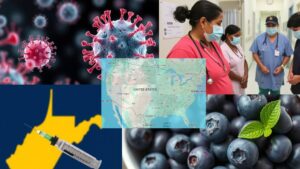As we step further into 2025, the world continues to adapt to new variants of the coronavirus. While vaccines and treatments have significantly improved, COVID-19 is still with us—evolving and occasionally catching communities off guard. Here’s a quick and clear guide to staying safe, recognizing symptoms, and protecting others in the era of Corona 2025.
🦠 What’s New With Corona in 2025?
The virus has changed—but so have we. The 2025 variants of the coronavirus are generally more contagious, though in most cases, less severe for vaccinated individuals. However, vulnerable populations—like the elderly or immunocompromised—remain at risk.
🧬 Key 2025 Variant Traits:
-
Faster transmission rate
-
Shorter incubation period (1–3 days)
-
Milder symptoms in many cases, but not always
-
Some strains may temporarily evade immunity
🤒 Top Symptoms in 2025 to Watch For
While the classic symptoms like fever and cough still apply, newer strains are bringing subtle changes. Here’s what to look for:
Common Symptoms:
-
Sore throat (often the first sign)
-
Runny or stuffy nose
-
Dry cough
-
Mild fever or chills
-
Fatigue or body aches
-
Headache
Less Common, But Concerning:
-
Shortness of breath
-
Chest discomfort
-
Loss of taste or smell (still occurs, but less frequently)
-
Brain fog or dizziness
If you’re feeling “just a little off,” don’t ignore it—early symptoms can be easily mistaken for a cold or allergies.
🛡️ Precautions: How to Stay Safe in 2025
Even with advancements, prevention remains key. Here’s how to protect yourself and those around you:
1. Stay Updated on Vaccines
Booster shots now target current variants more effectively. Check with your local health provider for the latest recommendations.
2. Mask Smart
High-quality masks (like N95 or KF94) are still recommended in crowded or enclosed public spaces, especially during seasonal surges.
3. Ventilation Is Vital
Open windows, use air purifiers, and avoid stuffy indoor spaces when possible. Good airflow drastically reduces the risk of infection.
4. Practice Hybrid Hygiene
Handwashing still matters! Combine it with smart distancing, especially if you or someone nearby is feeling unwell.
5. Rapid Test When in Doubt
Affordable home testing kits can help you catch infections early and prevent spread. If you’re symptomatic or exposed, test—and isolate if positive.
💬Adapting to a New Reality
Living with COVID-19 in 2025 means being prepared, not paranoid. Science, public awareness, and community cooperation have taken us a long way—but staying alert to symptoms and practicing basic precautions keeps us all moving forward safely.
Together, we’re not just surviving the pandemic—we’re adapting to outsmart it.










